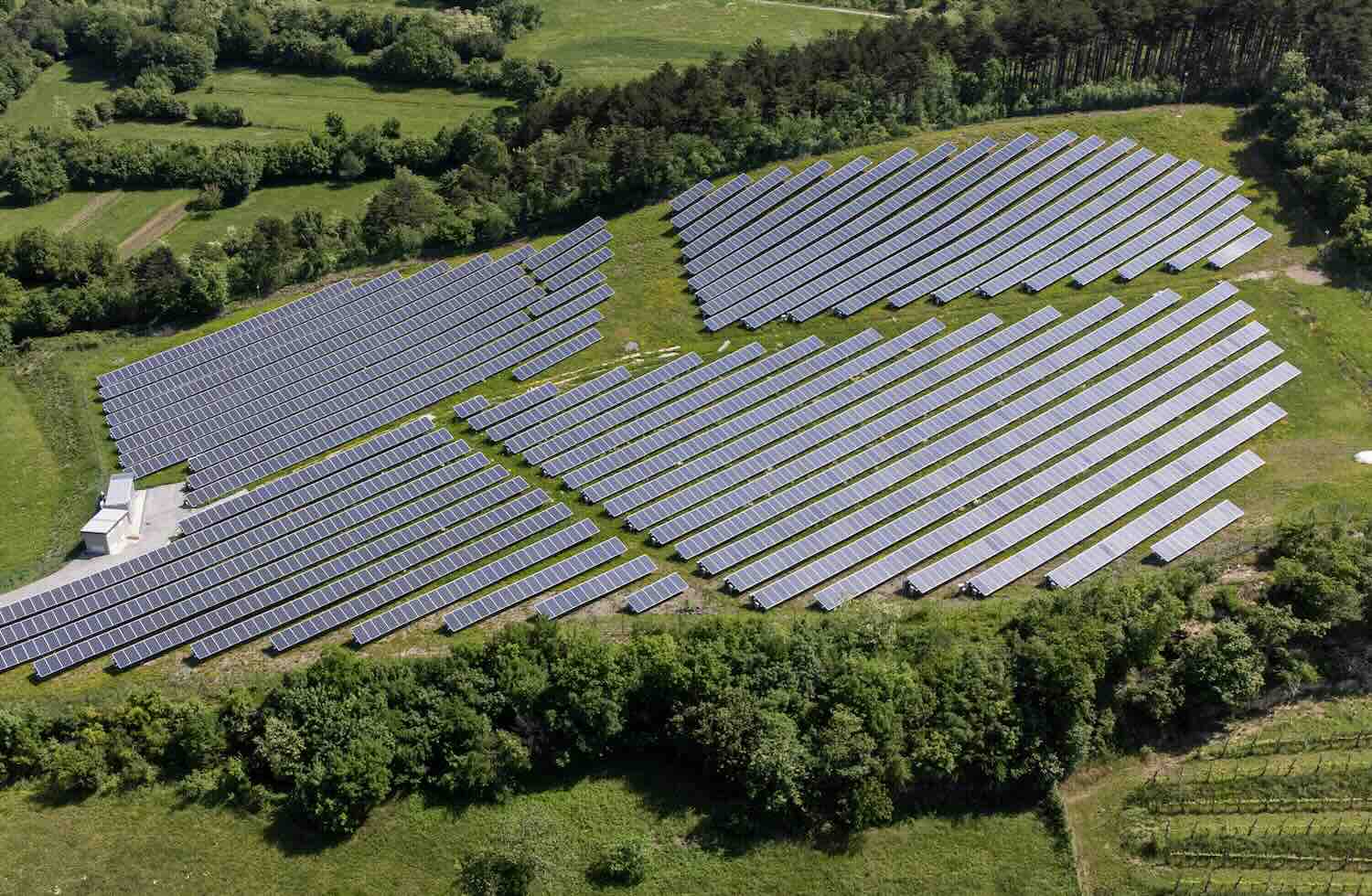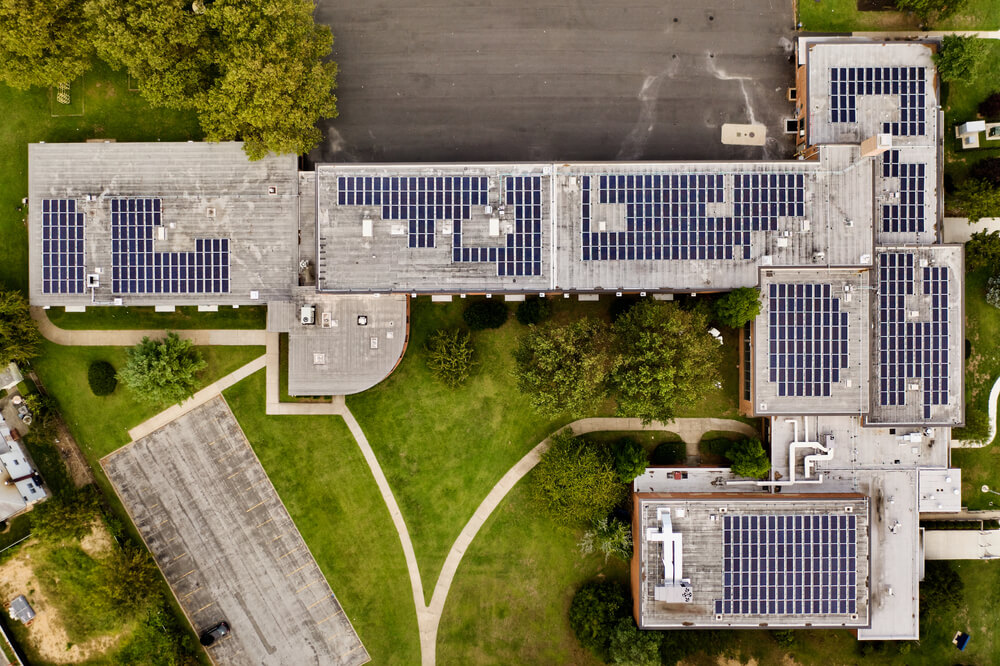ImpactAlpha, Aug. 11 – The Inflation Reduction Act hasn’t yet passed the House and already it is reframing narratives (the U.S. is a global climate leader!), reshaping assumptions about the role of climate solutions (deflationary!) and raising expectations for the green economy (jobs, jobs, jobs!).
All told, the bill includes an estimated $369 billion in climate and energy-related investments, making it the largest-ever federal commitment to action on climate change. Even before he signs the bill, President Joe Biden is resetting the storyline of his presidency, taking a “victory lap” after a string of legislative wins.
The messaging: “Make it here in America. Make it with American workers. Give those workers a chance to reach into the middle class and support their families with jobs and careers in clean energy and climate,” said Ali Zaidi, the president’s deputy national climate advisor. Delivering, he says “means saving for consumers and it means achieving our climate goals.
The climate bill includes more than $200 billion in clean electricity investments and incentives, almost $50 billion to retrofit buildings, $33 billion to electrify transportation and more than $20 billion for farmland conservation. Other line items: $3 billion for the Postal Service’s clean fleet investments, $1 billion in rural renewable energy loans and a tax credit for wind and solar investments in low-income neighborhoods (for a full breakdown, check out this spreadsheet from Ben Beach of BlueGreen Alliance and this analysis from the CPC Center).
The public financing is poised to accelerate already red-hot renewable energy investments, which hit a record $226 billion in the first half of the year.
“The private sector can come and build upon a very solid platform of incentives and guidance and industry creation around this bill, and that’s really promising,” Stephan Nicoleau of FullCycle Climate Partners told ImpactAlpha.
From geopolitics to cheaper appliances, here are eight ways the bill is resetting the climate table.
8. The U.S. can reassert global climate leadership. The IRA moves the U.S. from the list of climate laggards to the leaders. “This says, ‘We’re back, baby,’” Jennifer Turner of the Woodrow Wilson Center’s China Environment Forum in Washington, told the AP.
The Inflation Reduction Act will reduce U.S. emissions by 40% from 2005 levels by 2030, according to studies, putting the Biden administration within striking distance of its goal to halve emissions this decade. That “allows the U.S. to cement its global leadership on climate, compete with China on new technologies, keep pace with Europe’s actions, and show how growth in manufacturing can be tied to climate action and emissions reductions,” Matt Piotrowski of Climate Advisers told ImpactAlpha.
7. Making COP27 relevant. Advocates had all but written off as a lost cause the COP27 global climate summit in Sharm El Sheikh, Egypt this November. The U.S. was AWOL, the host country Egypt is cracking down on protests in advance of the conference, and the Russian invasion of Ukraine has disrupted the phaseout of fossil fuels by giving oil and gas production a boost. Now the U.S. is back, India and Australia have upped their climate ambitions, and prospects are improving for progress at COP27.
“I think it really provides a lot of opportunity for us to think more expansively about what’s possible,” said FullCycle’s Nicoleau. “Showing up to Sharm without climate legislation to speak of would not have been very great both for the United States nor for the gathering.”
Plenty of hurdles remain: Climate cooperation between the U.S. and China has soured as tensions over Taiwan flare. Wealthy nations have not fulfilled longtime funding promises to developing nations that had little to do with the climate crisis.
“A large focus of COP27 will be on adaptation in a year of crippling extreme heat on every continent,” said The Fletcher School’s Kyte. “The U.S. in particular, but also Europe and other G7 countries will need to step up, despite difficult economic times, to provide the support many low income countries need.”
6. Long termism is in fashion. With incentives locked in for 10 years, the IRA breaks the short-term cycle that has long stymied private sector planning and investment.
“The time frame is almost as important as the amount of incentives provided,” Rachel Kyte, dean of The Fletcher School at Tufts University, told ImpactAlpha. The legislation, she said “will allow investors to come in, pick up speed and drive growth through S-curve cycles so that it stays at pace with the 1.5-degree world.”
5. Electrifying everything, faster. Consumer savings and incentives will drive a boom in heat pumps, electric vehicles and induction stovetops. The IRA will reduce real electricity prices by 5% to 7%, forecasts Resources for the Future.
Rewire America, a nonprofit advocacy group, estimates that a household making $50,000 per year would be eligible for up to $14,000 in incentives for home electrification. Combined with other tax credits and incentives, they could replace aging water heaters, furnaces and air conditioners with modern electric equipment at zero upfront cost.
The incentives make a zero-emissions grid inevitable, unlocking the full benefits of electrification, Shaun Abrahamson of Third Sphere tells ImpactAlpha. One by one, appliances, vehicles and other goods will achieve “lower total cost of ownership, in large part because electricity prices won’t be subject to the type of volatility we see for fossil fuel-based systems.”
“This bill will provide a real boost, once the dollars flow through to the local level, for heat pumps and other home electrification,” Spring Lane Capital’s Rob Day told ImpactAlpha.
One sector poised to benefit: microgrids. Getting energy efficient technology into lower income homes is “fundamentally deflationary,” said the Coalition for Green Capital’s Reed Hundt. “We want Home Depot to be selling heat pumps, for them to be flying off the shelves.”
4. Creating climate jobs. Energy workforce investments and funding for a Civilian Climate Corps were dropped in the latest bill, but the bill includes additional incentives for projects that meet “prevailing wage requirements,” apprenticeships and union-level rates. Hundreds of billions in investment and incentives for onshoring clean tech supply chains will be a boon for U.S. workers in climate-related jobs.
Already, tech talent is moving toward climate ventures (forest carbon startup Pachama has had 15,000 applications). And initiatives like CREST are moving to diversify and upskill the climate workforce to meet the surging demand for talent.
3. Made in America, eventually. The IRA aims to cut the U.S.’s dependence on China and other countries for chips, rare minerals, batteries and other inputs for electric vehicles and next-gen industries. The bill includes $50 billion in tax incentives to boost domestic clean energy manufacturing of solar panels, wind turbines, batteries, and mineral mining and processing.
“This will prompt a wave of battery innovations” said Day of Spring Lane Capital.
The bill “gives us a sense as to where we will get our next generation of batteries and storage,” says FullCycle’s Nicloeau.
One twist: Few electric vehicles currently on the market will meet the bill’s Made in America requirements.
Though the bill drew no Republican support, many of the clean tech factories that the tax incentives will encourage will be sited in red states across the South and Midwest.
2. Expanding green banking. A $27 billion Greenhouse Gas Reduction Fund administered by the Environmental Protection Agency will bank hard-to-finance projects like building energy retrofits, small-scale community solar project and agricultural projects that store carbon and increase the resiliency of farm communities.
“Having a pool of capital in the form of a federal grant will allow us to deliver capital that’s much lower cost and is much longer term,” said the NRDC’s Douglass Sims, “and transform the economy in a much quicker way.”
1. Environmental justice? The bill invests $60 billion for environmental justice priorities, including pollution clean up and low-carbon retrofits in low-income communities. A tax on methane emissions will spur from oil and gas companies to cap wells and plug leaks in infrastructure that is predominantly sited near low-income communities. The bill includes direct payments to enable entities that can’t benefit from tax breaks to participate.
More than half of the $27 billion in the “green bank” fund is earmarked for disadvantaged communities. But advocates for community development financial institutions and minority-depository institutions, such as U.S. Black Chambers and Action Center on Race and the Economy, object that many community-based lenders are excluded because the bill restricts funding to nonprofit organizations.
More broadly, some climate justice leaders in Black and Latino communities, which disproportionately bear the burdens of climate change, are calling out the bill for its continued support for fossil fuel development and the lack of inclusion of communities of color in the legislative process. The Black Hive at The Movement for Black Lives, a collection of over 200 climate justice organizations, came out against the bill as “a deal that sacrifices Black lives for the pretense of clean energy progress.”
“We have the bill. It’s not perfect,” says Nicoleau. “But ultimately, we have to think of this as the laying of a foundation, a really strong one.”











